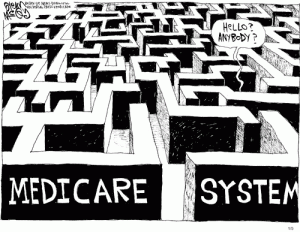By Emma Meads
When Foresight Radio Producer Pam McDonald interviews Andrew Constantino, Assistant Program Manager for Tiny House Villages in Seattle, he reveals details about this housing alternative that may be popular for seniors. Below are some takeaways from the interview.
Low-Income Housing Institute (LIHI)
LIHI is a nonprofit developer focusing on creating below-market-rate housing for low-income people. As homelessness has grown on the west coast and nationally, that need has become greater, Constantino says, so he became involved with tiny house villages to serve that population.
Andrew says, “We contract with a local church that offers a piece of property where we set up a number of these houses with power but no plumbing.” There’s also a community restroom area and other services such as onsite case management.
An iteration that LIHI recently worked on is a cottage village. Andrew says, “The cottages are about two times the size of our current tiny houses. They have a kitchenette, they’re plumbed, and about 12 comprise the village. Onsite staff includes a property manager and a case manager. There’s a place to read or watch a movie with others. It’s appealing to people with a fixed income like seniors.”
Building A Communal Atmosphere
Andrew emphasizes the importance of building a communal atmosphere. He says, “When you get to know your neighbors, you’re all in it together, you share resources. Many days you’ll see villagers cooking for and sharing with each other. It creates this supportive community, which is magical to witness happening. This model of communal living in the villages will only grow. It’s not going away.”
Ultimately, the goal is to place people into permanent or permanently-supportive housing, and Andrew says the tiny house villages are an excellent use of space and resources. He notes, “You’re not going to spend all day inside, so you’re interacting with your neighbors more. There is a subtle beauty to the tiny house village model that just speaks to the human spirit and desire for connection.”
Benefits to the City
“Building low-income housing can be expensive and take years before it serves those who would otherwise be unhoused,” Andrew states. “The villages fill in that middle bridge point, like interim emergency housing. It meets a market need and, when the average taxpaying citizen sees this, they’re more supportive.”
Living in tiny homes also helps people who might be spiraling from drug addiction, Andrew points out. “They finally have some stability. It creates conditions where we can begin to address those underlying issues. So, the tiny house villages create a stable base for people to land in.”
The Goldilocks Zone
Most villages have about 40 to 50 individual tiny houses. Andrew says, “If there are too many more, then you don’t know everybody. It gets difficult to manage that. These villages are a lot like a big house with 40 rooms. It is much more of a family atmosphere.
“Some villages have a self-managing model,” Andrew says, “where villagers themselves handle the operations with just a little oversight. We’ve found that case managers being able to help people put their lives back together is a vital component and well worth the cost.”
Click here to read comments and join the conversation about this article.










